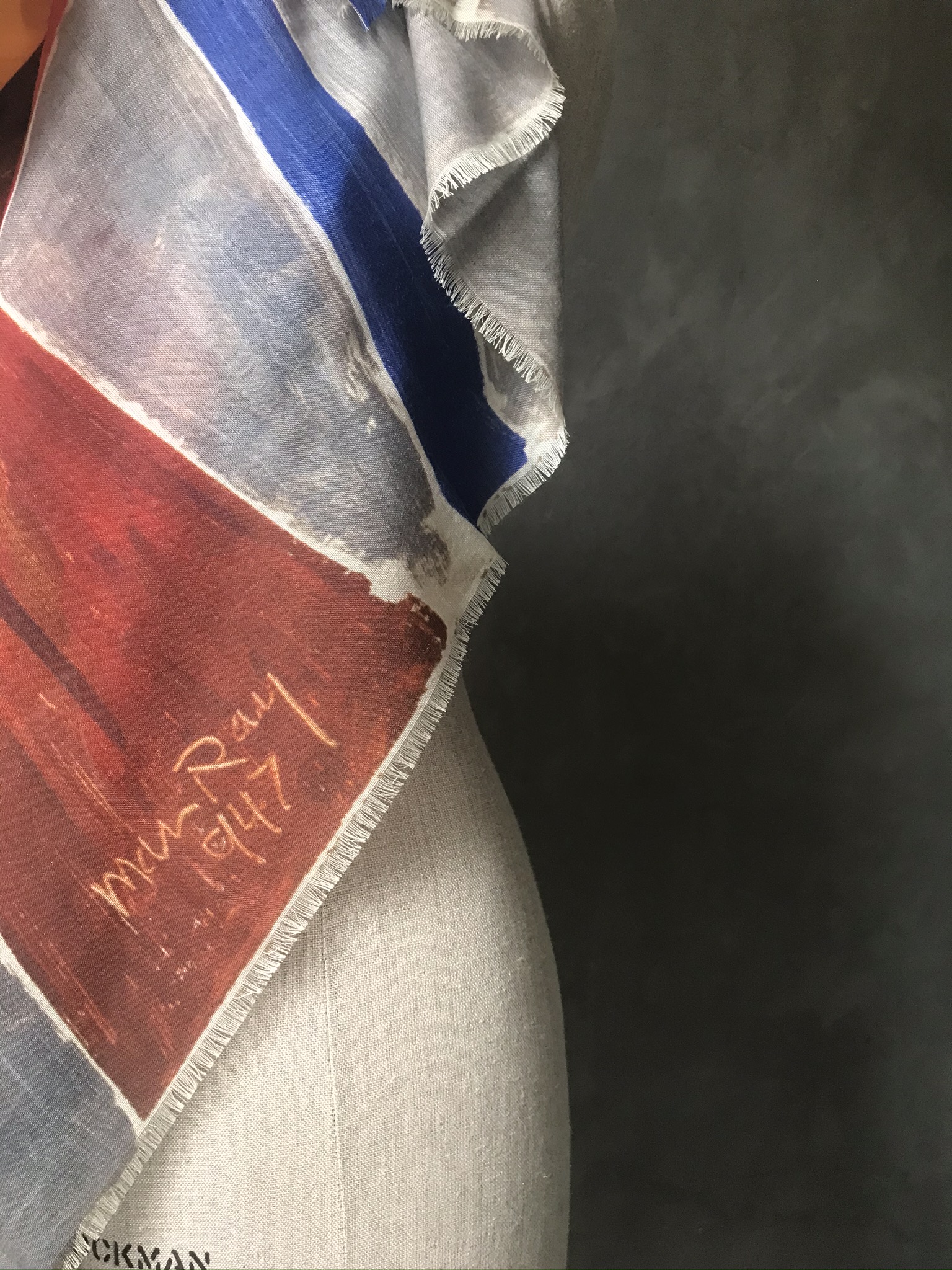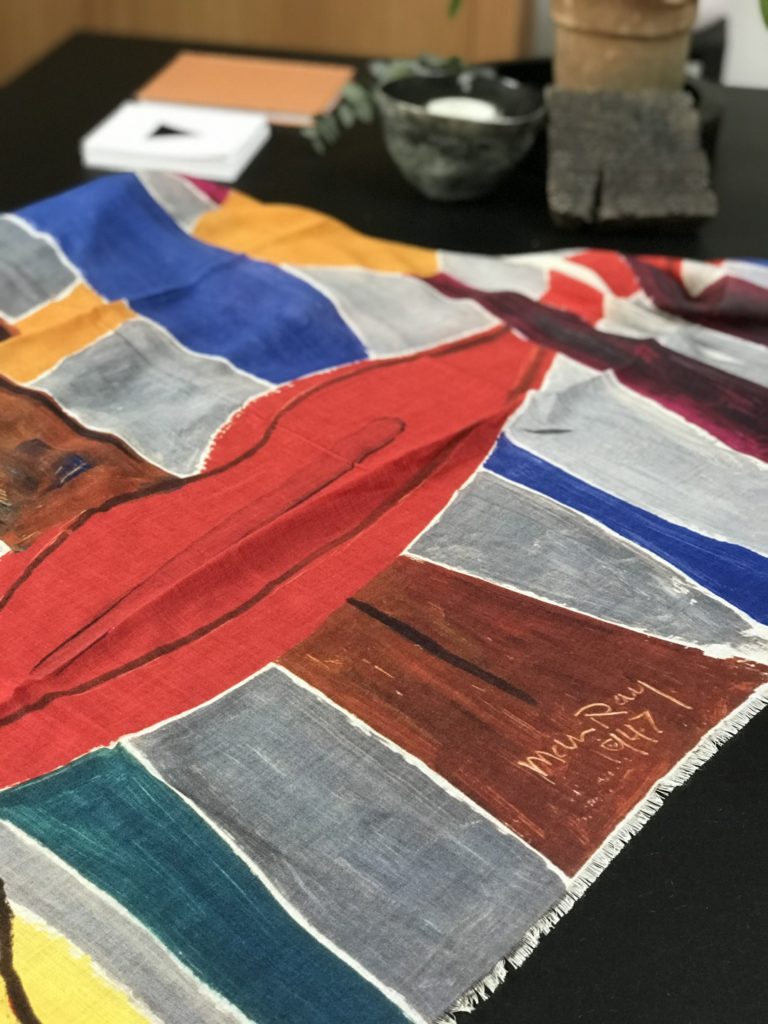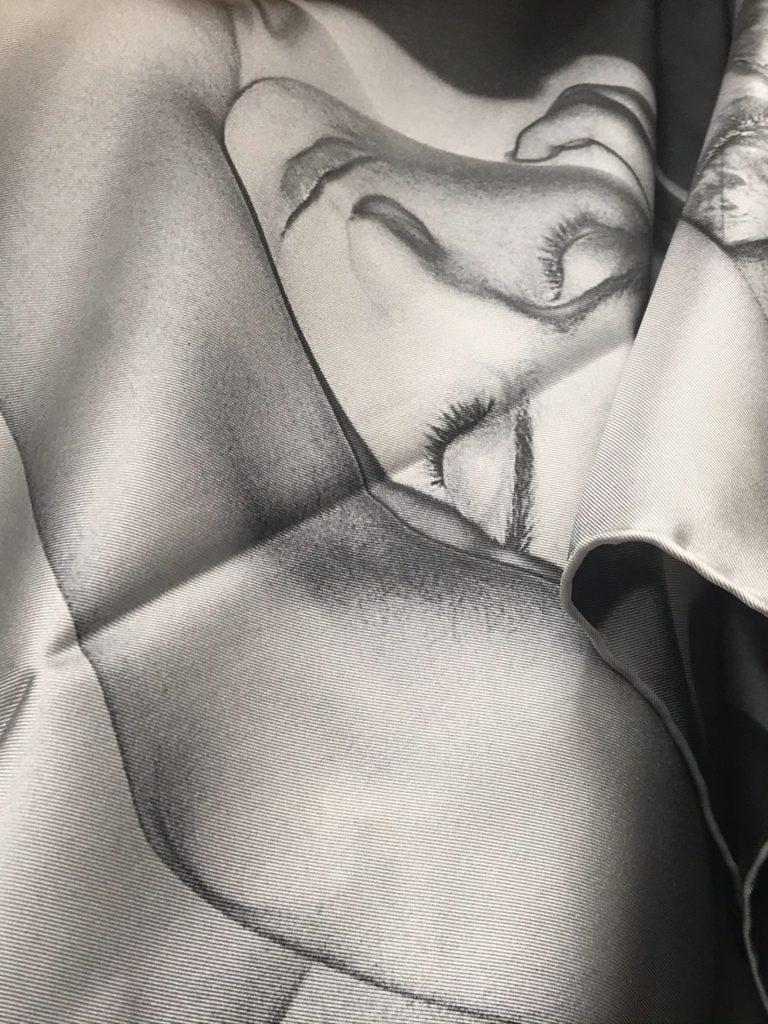These days, fashion sure is taking a lot of cues from the past, with styles from the 1980s and 1990s trending hard. Why not go back a bit further, to 16th-century Europe, when friendship books, used to connect friends and family around the continent, were popular. Wearable art atelier Alba Amicorum, the brainchild of Darshana Shilpi Rouget, who, as a creative director at an agency directed campaigns for Tiffany’s and Cartier, teams up with artists around the world to create sustainable limited-edition scarves meant to be personal way of communicating your ideas and personality. We chatted with Darshana to find out more. —Noa Nichol
Hello Darshana! Please tell us a bit about yourself to start.
I was born in Bombay into a family of artists, lived and worked in New York City for 20 years, married my longtime friend from Paris and now live in London with some time spent in Brussels. I continue to work with design, drawing, painting and photography.
When and why did you launch Alba Amicorum?
After being a student at the Fashion Institute of Technology in New York, I went on to work as an artist and a creative director for many influential global brands. This gave me a taste for the collaborative process with other creative minds. I felt a strong desire to find a platform where I could bring together my artist friends from around the world and cultivate new relationships. This laid the foundation for Alba Amicorum, which was launched in 2016
What fashion niche were/are you aiming to fill, and what is the storied meaning behind the name?
To be honest, I wasn’t consciously thinking about filling any fashion niche. Instead, I wanted to create a space for people with a deep connection and interest in art. Working with artists from various disciplines, we chose the scarf as the common ground or canvas. A scarf “un-frames” art from its traditional frame and onto a fluid fabric—to be worn, draped, wrapped, folded or hung in any way the wearer chooses. It creates an intimate relationship between art and the wearer while giving the observer a unique perspective through its folds. Alba Amicorum translates as Albums of Friendship. Popular in 16th-century Bavaria, alba amicorum was a cross between a scrapbook and an autograph album. These books have been described as an early form of social media that connected friends separated by distance, reinforced relationships and showed off literary and artistic connections. At Atelier Alba Amicorum, the scarf becomes a personal means of communication for the wearer like the Renaissance friendship books.
Who are some of the artists you have collaborated with so far? Do you have a “bucket list” of artists you would like to partner with in the future?
Collaborating artists span different generations, cultural backgrounds and media. They include the works of Man Ray through the Man Ray Trust and Indian painter, sculptor and designer Babuji Rajendra Shilpi. Living artists include painter Mary Jones, writer Ross Klavan, photographers James T Murray and Joel Benguigui, painters and sculptors Sh. Chimeddorj and Deni Javas, and myself. We also work with performing artists Juliet Burnett and Misako Kato. We are working on another exciting collaboration this year, keeping in the step of Man Ray. I would love to work with many artists who continue to inspire and move me. However, I have enjoyed how every collaboration has developed from organic encounters, like art itself.
In what ways do you think wearable art, like your scarves, enhance and epitomize personal style?
A scarf is a simple cloth square. Each person creates their unique draping, remaking it into whatever inspires the moment. It may be knotted around the neck, flowing freely over the shoulders, sinched around the waist or worn as a top or a sarong. Each fold explores unexpected parts of the artwork, combined with colours of choice. Each person will carry the scarf in their own unique way.
We understand that each piece you create is limited edition; how many of each design do you tend to release, and how can people obtain them?
The scarves are created in editions of one to about 60. But the majority of our editions come in editions of 20 to 25. Each scarf is accompanied by a certificate of authentication and its unique edition number. The scarves can be purchased from our online shop or by visiting our Belgravia atelier in person. We have a wonderful light-filled space where we work and show the results. You can interact physically with the scarves and learn about our collaborations. Appointments can be made by phone or email.
Tell us about the sustainability factor.
We do not make seasonal or trend-based collections. Instead, each of our pieces is meant to be collectable and enjoyed for many years to come. We take great care in packaging our scarves. Every part of our packaging is intended to be reused and kept for a lifetime of storage. Each scarf is protected in a fine cotton muslin pouch. Our recycled paper notecard can be planted in soil to grow wildflowers. This is then packed in a wheat straw paper box that replaces 50 per cent classic wood-based raw materials and then tied with our signature twine knot. The shopping bags are reusable and handmade using raw cotton and gauze.
What makes one of these scarves the perfect gift for someone you love?
These scarves are thoughtful and unique gifts for those who love art, enjoy the story behind what they own, understand quality and cherish their personal style. Each collectable scarf is a work of art and is available in limited editions to wear or display. The recipient of your gift, where possible, can learn more about the artist or visit the artist studio. We are always happy to share our stories and invite them into our world. Our scarves are made from the finest silks and cashmere by a skilled family of Italian artisans in Como, who work for the fashion world’s most prestigious designers. They work tirelessly with us to maintain the accuracy of translating the artists’ colours onto the fabrics.




Be the first to comment